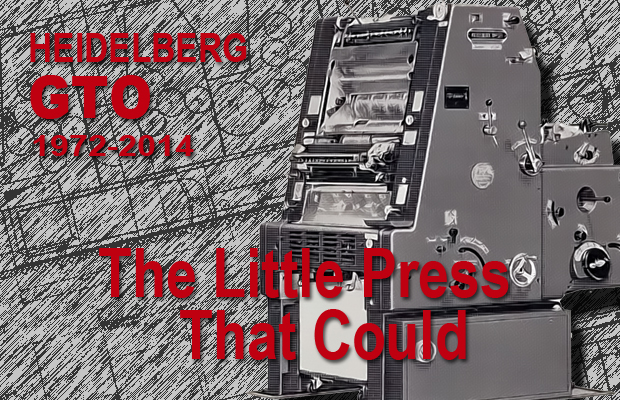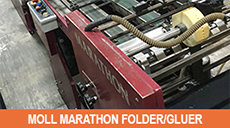Undoubtedly the most outstanding
small-format press ever
made was the Heidelberg GTO.
Many printers grew their businesses
with a GTO. To appreciate
the impact of this little marvel, we
need to go back through time, 42 years in
fact, to 1972. This was the year that Heidelberg,
at the Drupa Fair in Germany,
formally presented the GTO 46. Originally
only offered as a single colour in a
sheet size of 32 x 46 cm (12 5/8 x 18
inches), you could also buy a modified
“TO” version with sheet size of 26 x 32 cm
(10 x 12 5/8 inches).
From the mid-1950s, the small sheetfed
offset press market was a largely an
afterthought for major machinery suppliers.
Such presses tended to be less robust
and none could register hairline, leaving
smaller print shops without a way to
penetrate more lucrative, higher quality
work done on bigger presses.
The Addressograph Multigraph was a
very popular press, as was the Davidson,
ATF Chief 15 (known in Canada as the
Gestetner Gestelith), and AB Dick. In
America, Miehle marketed the larger AB
Dick 380 under its marquee and Harris
built a 14 x 20-inch model LUH. Neither
was very exciting. Over time, small offset
presses settled into the niche of Quick
Printing, while being very good at stationery
and envelope printing.
KOVO of
Czechoslovakia manufactured the
Romayor, a clone of the British Rotaprint.
In Japan, earlier attempts by companies
like Fuji (Shinohara) and Hamada were
less successful. Hamada, however, was an
early exporter to North America. In
Canada, Toronto Type Foundry was
probably the first Hamada importer and
rebranded the press as TORLITH. Canadian
Linotype later controlled the
agency and called it the LINOLITH.
Reviews were not kind to Japanese
builders in the 1960s and the American
Multilith and then AB Dick machines
dominated the Instant Print market.
Duplicators, as these light-duty machines
were called, developed their own mini-industry,
with tools like PMT and electrostatic
plates.
Webendorfer-Wills company in 1935
put out an interesting little press in the 14
x 20-inch size and called it the Little
Chief. It was a major break from, for example,
a Multilith or a Davidson, and was built
like a much bigger press. This press could
register albeit with tumbler grippers and
a push guide. The industry paid attention
and after ATF bought Webendorfer-Wills
Co. in 1938, Chief 20s made their way
across North America.
Someone did pay attention to small-format
workhorses and it was Heidelberg.
With the 1962 launch of Heidelberg’s first
offset press, the KOR, the company’s
management board likely agreed that
Schnellpresse needed to accept the fact
that offset printing was going to win the
war over letterpress. The long-time head
of Heidelberg, Herbert Sternberg, is
noted as not favouring offset and was
likely pressured by younger, more progressive
managers.
The KOR was possibly a way to appease
Sternberg as it was really a K letterpress
with bed removed and modified
for offset. The KOR’s success
spawned other sheet sizes, but it was also
a heavy piece of machinery and probably
more costly than designing from scratch.
Heidelberg did go back to the drawing
board in the 1960s and introduced its
GTO at drupa 1972. No one had seen
such a press before! The side frames were
cast in one piece from lightweight aluminum
alloy. Every shaft, as well as the
main cylinders, ran in precise bearings –
unheard of technology in the duplicator
field.
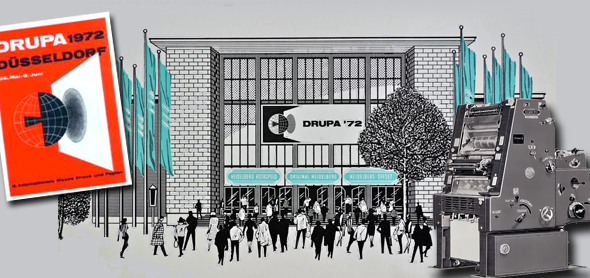
Everything the little ATF Chief could have been was found in this little GTO
gem. With the thought of replacing the T
Platen for applications like numbering,
Heidelberg fashioned a device (referred
to as PLUS) for a numbering box or even
a flexo plate to number or add an additional
colour.
By Drupa 1977, a 2-colour GTO with
convertible perfector was released by
Heidelberg. In 1979, the sheet size was
expanded to 36 x 52 cm, which was welcome
news and a major impetus for GTO
domination. Eventually, the GTO was
expanded to 4- then 5-colour models. At
Drupa 1986, the well-known ALCOLOR
continuous dampening system was offered
as an option along with Heidelberg’s
range of CPC consoles.
In September 1993, Heidelberg introduced
the GTO-DI (Direct Imaging)
press. Teaming up with US innovator,
Presstek, Heidelberg built-in the Spark
then PEARL laser heads. But, the early
days of Direct Imaging left many customers
disillusioned with poor print quality.
Undaunted, Heidelberg stuck with the
GTO offset press and its platform was
expanded in sheet size in 1980 to become
the M-Offset. By 1974, Heidelberg had
brought out the Speedmaster 72, a 52 x
72 cm press. Similarities with the GTO
were evident. The perfecting device was
almost identical.
Why was the GTO such a terrific press?
First, it was over-built compared with
duplicators of the day. Even using a push
side guide did not prevent printing 4-colour
in hairline register. America in the
1960s was heading toward the creation of
what we now call the Rustbelt. Unions
and environmental laws slowly ate away
at America’s industrial strengths.
Foundries and allied industries were
either reducing in size, raising prices or
closing. Germany took on a clear advantage,
particularly with the Deutsche Marks exchange
rate, just as the Yen was increasing
imports from Japan.
Almost impossible to wear out, with no
serious competition and so incredibly
easy to run, the GTO was the press behind
many of today’s most successful
printers. Even forgers loved the press.
Reports suggest as many as 106,000
units were sold. My estimation (based on
tracking serial numbers) suggests that
Heidelberg made that many and almost
75,000 were complete machines not just
printing units!
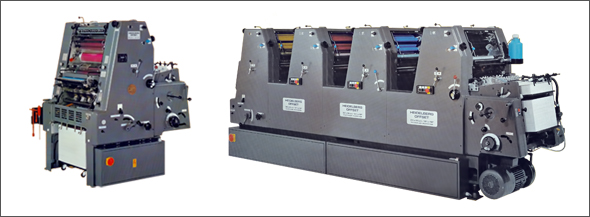
1977- early 1980s: The GTO line was available in single, 2- and 4-colour presses, as well as the expanded sheet size of 14" x 20" (46 x 52 cm) - GTO 52.
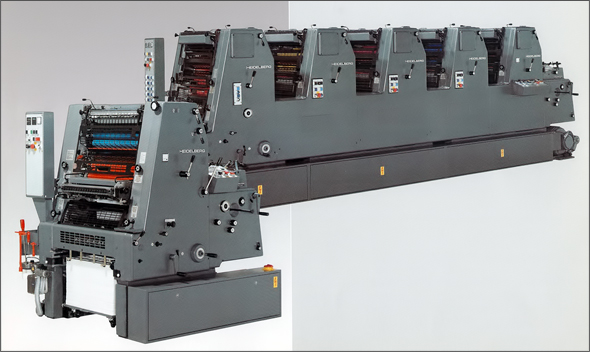
Mid 1980's - 1990's: The GTO 52 line continued to evolve, adding 5-colour presses to the stable, offering more press options such as Alcolor, stream feeder, and CPC console, including CPTronic. By this time, GTO 46 was slowly relegated to just a single-colour format.
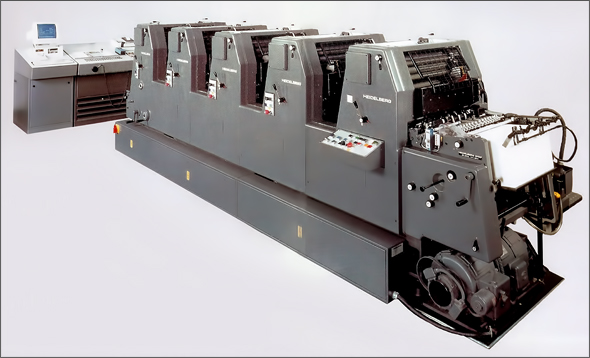
1990's: The GTO 52 line continued to be popular. Heidelberg introduced GTO 52-DI in the fall of 1993 which was not received well due to poor print quality.
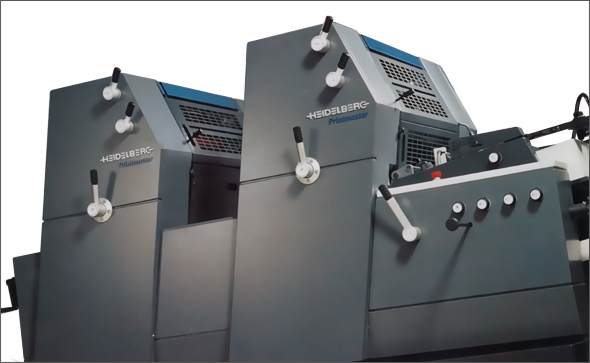
2000's: In the new millenium, marketed as Printmaster GTO, the little press that could saw strong competition from SM 52 and the emerging digital revolution. In 2014, the production of the GTO line came to an end after 42 successful years.
|


